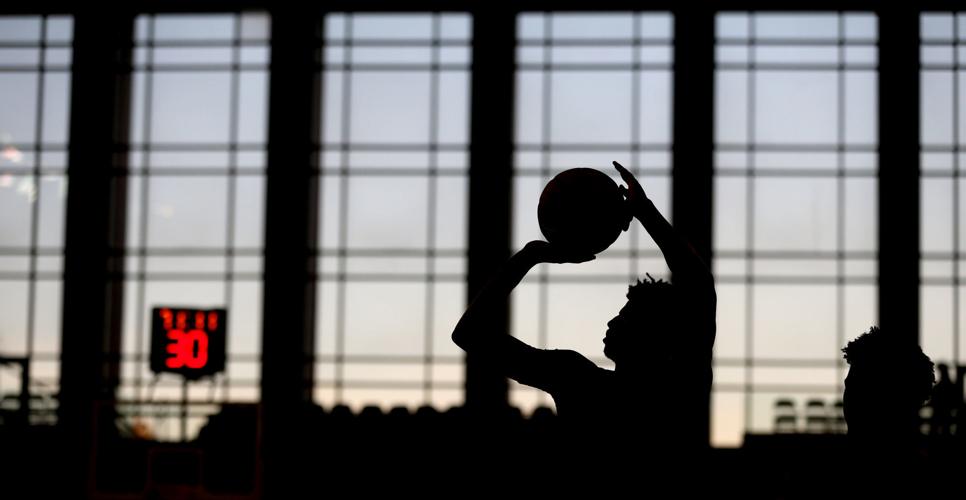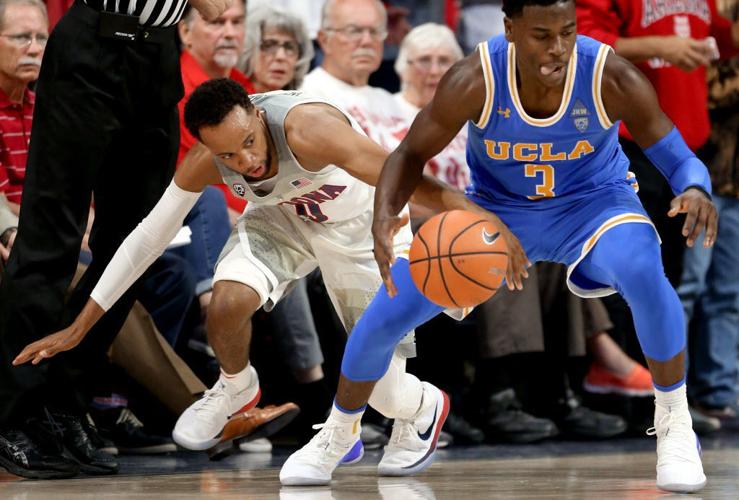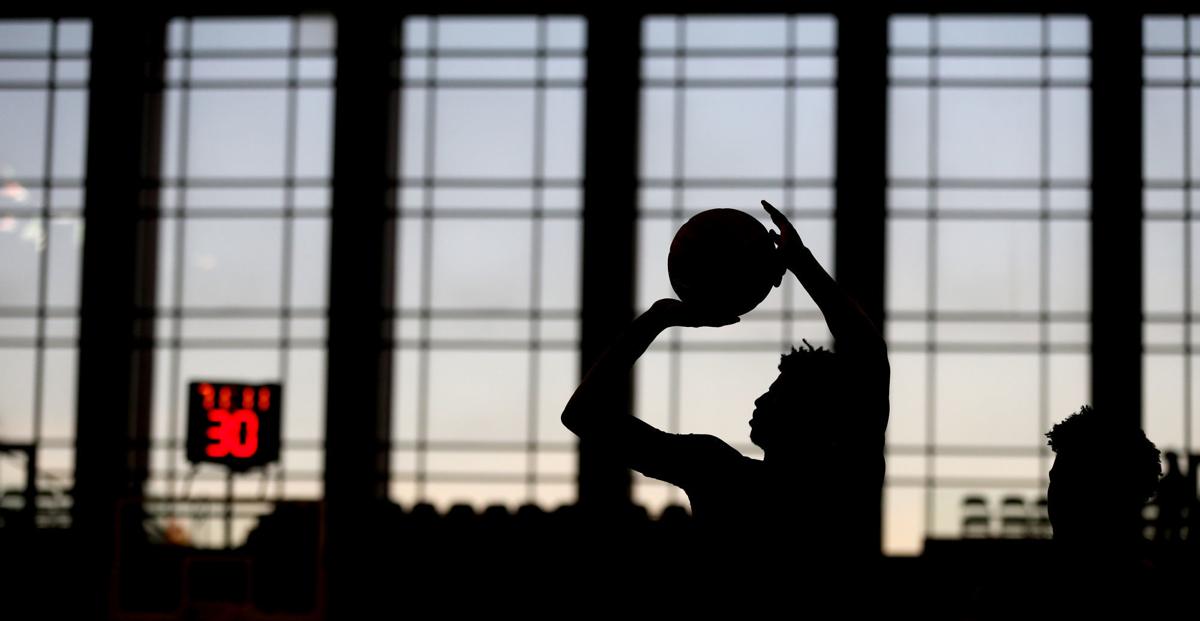Arizona’s first-ever basketball game against UCLA was an event of such magnitude that this newspaper wrote “Arizona views the basketball world from a molehill, prepared to attack the heights.”
That was 1923. UCLA wasn’t yet UCLA. It was known as the SBOC — Southern Branch of the University of California. Nickname: Cubs.
When the Wildcats stunned the Cubs in the second of two Los Angeles games, the Star wrote “beating the Southern Branch of the University of California is a feat extraordinary.”
Arizona is 43-44 against UCLA since they became Pac-10 partners, and so many of those 87 games were, as written in 1923, extraordinary.

The Star said Arizona’s first-ever win over UCLA — in 1923 — was a “feat extraordinary.”
Alas, Saturday’s game at Pauley Pavilion matches two unremarkable clubs. It’s more molehill than something at college basketball’s heights.
The problem is that when Arizona and UCLA are down simultaneously — and that has happened just once, 2010, since 1984 — the league suffers. There is no ready replacement to match the aura of an Arizona-UCLA game, the West Coast’s version of Duke-North Carolina.
There’s no one to carry the torch. No other Pac-12 school has a basketball brand.
Oregon-Washington? Not a chance. There were more than 3,000 empty seats at Matthew Knight Arena on Thursday when the Ducks and Huskies played the league’s first “showdown game” of the season.
The Huskies, off to their best conference start in 35 years, average just 6,829 fans per game in Seattle.
The Pac-12 front office, under well-deserved fire from many critics, no longer has a round-robin basketball schedule. This year it means Washington’s fans will not get to watch Arizona and Arizona State in Seattle.
A Seattle showdown between the Huskies and Sun Devils might’ve been one of the games of the year in the Pac-12. It’s potentially the type of game that would draw eyes from coast to coast and give the beleaguered Pac-12 some relevance.
The Pac-12’s scheduling template also means that Tucsonans won’t get to watch UCLA at McKale Center. That won’t necessarily be a negative this year, but it’s not — and has never been — a good policy. It should be changed ASAP.
Since 1990, Arizona has played 47 conference teams ranked in the Top 25 during the regular season at McKale. Here’s the breakdown:
UCLA (16 times);
Stanford (nine times);
USC, Cal, Washington (four times);
Oregon, ASU (three times);
Washington State (two times);
Utah, Oregon State (one time).
College basketball is in the process of a shift in scheduling procedures, and it’s long overdue. The Big Ten this year increased its league schedule to 20 games per team, up from 18.
The ACC next year will go from 18 to 20 conference games. As insane as it sounds, Duke and North Carolina State, located 9 miles apart, only play each other once in the ACC season. Now it will be home-and-home. Even the Big Sky Conference is moving to a 20-game league schedule next season.
The Big Ten added two league games mostly to provide better programming to its media rights partners — especially the Big Ten Network. But it also helps to better identify a league champion. Until this year, the Big Ten had eight “misses” in league play. That’s too many.
The Pac-12 should act decisively to eliminate two of the four “misses” on its basketball schedule. It would benefit fan engagement and potentially improve each team’s strength-of-schedule quotient in the NCAA Tournament’s all-powerful computer model.
Just think: Instead of playing Cal Poly and Houston Baptist this season, Arizona could’ve played December home games against UCLA and USC.

Arizona guard Parker Jackson-Cartwright (0) just misses the ball on a backdoor steal attempt against UCLA’s Aaron Holiday during their Pac-12 game at McKale Center, Thursday, Feb. 8, 2018.
The Big Ten scheduled its teams to play conference games on the weekend of Nov. 30-Dec. 2. That’s not unfamiliar territory in the Pac-12. In five seasons from 1978-79 to 1990-90, all Pac-10 teams played two conference games before Christmas.
How did it work? One of the most memorable weekends in Oregon/Oregon State basketball history took place from Nov. 30-Dec. 2, 1989, when the Ducks and Beavers drew capacity crowds in an unforgettable sweep of No. 2 Arizona.
It wasn’t that costly for Arizona, either. The Wildcats rallied, went 15-1 the rest of the league season and shared the championship with Oregon State.
MORE: With day off before UCLA, Sean Miller and Wildcats try to find light in latest debacle
Utah coach Larry Krystkowiak last week told the Salt Lake Tribune he is an advocate of a 20-game Pac-12 season. He is supported by Utah deputy athletic director Scott Kull, a marketing specialist who told the newspaper he would prefer a 22-game league schedule.
The difficulty of selling tickets against nonconference teams like Florida A&M and Maine led the Utes to use a curtain that blocks off upper-deck seats at Huntsman Center. In some games, the Utes listed attendance at close to 11,000 but actually scanned closer to 6,000 tickets.
Given the power of the dollar, and the growing importance of NCAA Tournament qualifying rankings, “scheduling down” is not viewed as a good thing.
The Pac-12 Networks, whose December men’s basketball programming is dreadfully dull, could replace an UCLA-Stetson game with a UCLA-Arizona State game. It could fill two weeks of programming with meaningful conference games and fewer Oregon-Florida A&M games.
The Pac-12 would create a better programming inventory and more fans might buy tickets. What an idea.
ACC commissioner John Swofford recently announced that not only will the ACC expand to 20 conference games, but that its teams will open the 2019-20 season by playing conference games.
“It should make the tipoff of that season truly special,” Swofford told reporters. “It’ll be a celebration of our brand.”
The Pac-12 could ideally stage its basketball season openers at T-Mobile Arena in Las Vegas. How about three doubleheaders over a late-November or early-December weekend?
It would be a basketball celebration in a league that now has little to celebrate.







